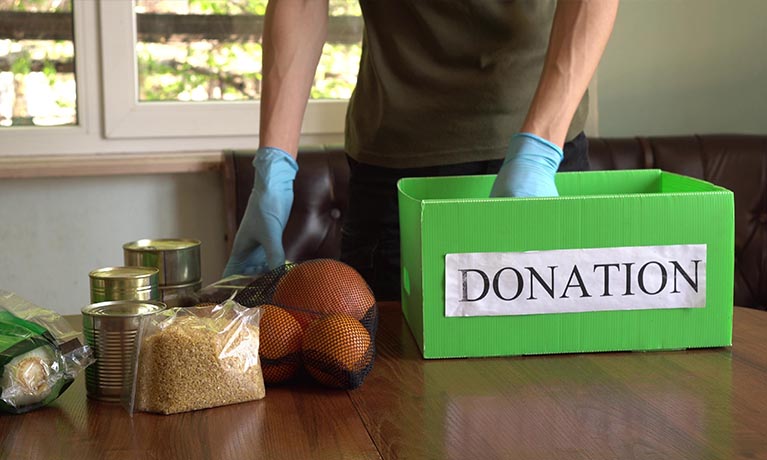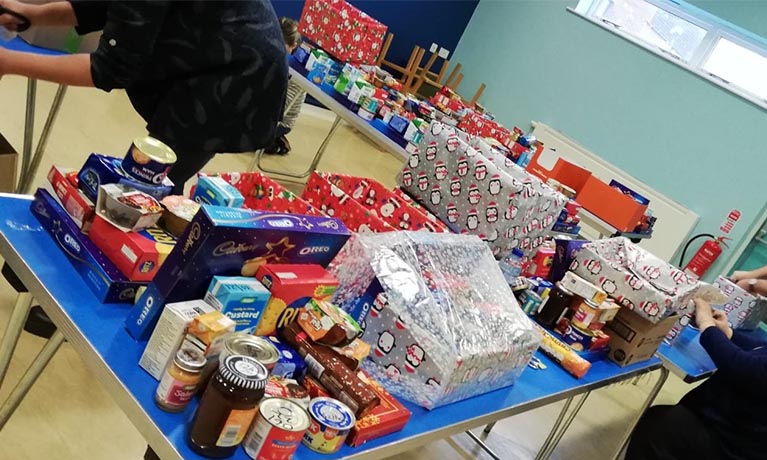By By Marsha Smith, Dr. David Bek and Dr. Jordon Lazell, Centre for Business in Society
As the festive season draws near, many of us are thinking ahead to celebrations with friends and family and to the food we will purchase, share and eat together. However, for rising numbers of people these thoughts will be tainted with anxiety. Last winter, for the first time in 70 years, UNICEF stepped in to feed hungry children in the UK, where food insecurity for adults has increased significantly since the beginning of the pandemic (Loopstra, 2020).
Dining alone this Christmas
In addition to economic vulnerability, a lack of social connections is causing the rise of a new dimension to food insecurity; that of social food insecurity. Pre-pandemic, the number of people struggling to access sufficient food was already rising. Over the past two years this has worsened. Requirements to self-isolate and an absence of social networks meant many people went unsupported. The inability for households to share food with neighbours during the pandemic exacerbated the issue further. During the upcoming Christmas period these vulnerabilities will be thrown into sharp relief when predicted record numbers of people will dine alone due to illness, self-isolation, the need to shield, and poverty (The Guardian, 2021).
Reliance on the market to balance demand with need and the pushing of responsibility onto individuals to purchase adequate food were key government responses at the height of the pandemic. However, another response was the willingness of community food groups across the UK to step up and support both economically and socially vulnerable people. These groups are now gearing up for this Christmas to supply food in the form of affordable and accessible meals and food parcels, alongside much-valued social contact.

The critical role of community food groups
During 2021, the Centre for Business in Society’s research team (Dr. David Bek, Dr. Jordon Lazell and Marsha Smith) undertook research with food redistribution charity Fareshare that revealed what had been going on behind the scenes during the pandemic. The research focused on how community food groups have risen to the task of ensuring that people have been able to eat, eat well and, when restrictions have allowed, to eat together.
Our findings have shown that these groups and their diverse range of partners and stakeholders are a form of ‘social’ infrastructure (Klinenberg, 2018). Charities, local authorities and schools as well as community and mutual aid groups are viewed here as crucial non-market, group-oriented actors.
The importance of eating together
One key insight from the research was the role that eating together at the same table, or ‘commensality’ as it is termed academically, played in sticking this food infrastructure together. Commensality enables social bonding, forms of care, pleasure and socialising. This benefits not just family and community groups, but also wider societal structures by improving their effectiveness (Dunbar, 2017).
Community food services draw upon our common affection for commensality to connect with vulnerable individuals in ‘soft’, social encounters. These services use shared mealtimes to signpost and support people in non-stigmatising ways (Smith and Harvey, 2021). Community food services help individuals forge relationships that they can rely on in vulnerable times. They are places and spaces where people feel able to get involved, to ask for and offer support, and where their nutritional as well as social needs are being met.
A social eating agenda to tackle food insecurity
Community food services are reaching into people’s lives in ways that a government-issued food parcel cannot. In our research all groups and stakeholders stated that physical sustenance and social nourishment must go hand in hand. Our research findings show that ongoing, strategic investment and support for commensal activities should form part of year-round food security measures.
Our recommendations have been taken up with ‘social eating’ now forming a key component of the regional Public Health food security strategy in the East Midlands. This agenda, backed up with almost £1 million of government funding, is aimed at supporting groups that offer nutritious and affordable foodstuffs as well as engaging group eating activities. Whilst the overall picture of food insecurity and social exclusion may make for grim Yule tidings, funders are beginning to acknowledge the importance of these community food groups through a recognition that commensality should be for life, not just for Christmas.
A presentation with further insights from the research project can be found in the link below:
Fareshare: Fighting Hunger, Tackling food waste Impact event – Part of the Future of Food Symposium 2021: https://www.youtube.com/watch?v=bZB1F-c5etE
References:
Dunbar, R.I.M. (2017) Breaking Bread: The Function of Social Eating. Adaptive Human Behavior and Physiology. 3, 198-211
Klinenberg, E., (2018). Palaces for the people: How to build a more equal and united society. Random House.
Loopstra, R., (2020). Vulnerability to food insecurity since the COVID-19 lockdown. London: The Food Foundation.
Smith, M. and Harvey, J., (2021). Social eating initiatives and the practices of commensality. Appetite, 161, p.105107.
Smith, M., (2021). Social eating is for life…. Not just for Christmas. Accessed 15.12.21. Available at: https://housingjustice.org.uk/blogs/2021/social-eating-is-for-life
Smith, M., (2021). FROM STREET FEEDING TO SOCIAL EATING. Taking a ‘more than food’ approach. Accessed 14.12.21. Available at: https://housingjustice.org.uk/wp-content/uploads/2021/12/From-Street-Feeding-to-Social-Eating-Dec-2021.pdf
The Guardian, (2021). ‘Wellbeing in decline in England as loneliness rises, report shows’. Accessed 12.12.21. Available at: https://www.theguardian.com/society/2021/aug/02/wellbeing-in-decline-in-england-as-loneliness-rises-report-shows




Comments are disabled